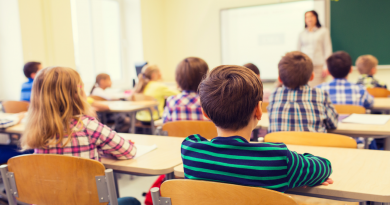Next Gen Learning Environments: Lessons From Pokémon
By Irene Nigaglioni
Last summer, Pokémon Go was released, and it sent kids and adults into a frenzy as they tried to “catch ‘em all”. I noticed how engaged and dedicated they were to play the game, and how much they collaborated and helped each other as they tried to find the Pokémon.
One day I asked my son’s friend why he liked the game so much, and he explained that it was different every day, so he had to get better to do well. He also said he liked the fact he could play with friends, and they would go to different places looking for the Pokémon.
I had never played the game, but decided to try it to see if it was as engaging as everyone else made it out to be. Immediately, I was surprised how fun the game was, and how I kept going back to it during the day.
I have to admit, I am a bit competitive, so the challenge of catching them all kept me focused, but the novelty was also exciting. Augmented reality games such as Pokémon Go are becoming very popular, and their success is predicated on how they fully engage users. As a player, multiple senses are activated, which make the experience fun and rewarding.
As an architect with a focus on education, I am always thinking of ways to make our learning environments more fun and engaging. Looking at some of the qualities of Pokémon Go, I can make parallels to school design that can result in fun, exciting places for students to learn.
First, learning environments should allow for students to “play” together. Next Generation learning environments should include areas for collaboration and conversation. These could be large spaces that allow full classes to come together or nooks and niches where a few students can work together in a small group. We learn better when we teach others, and these spaces are conducive for students to share learning experiences.
A second feature of Pokémon Go that should be incorporated into the design of learning environments is movement. Unlike other digital games, Pokémon Go requires people to move to achieve the goal. Learning environments need to provide the same opportunity, with active learning furniture and space design that invites movement.
The traditional factory era classroom with desks lined in rows inhibits movement, which in turn inhibits learning. Activating the school building with movable walls and furniture creates the opportunity for students and teachers to move, activating the brain so learning can take place. The ability to reorganize spaces and to continually access other parts of the building allows teachers and students to take ownership of their learning experiences.
Lastly, learning environments should welcome and embrace the novelty of Pokemon Go. On average, students spend more than 14,000 hours in school from Kindergarten to 12th grade, and in most cases, they are in buildings that are highly institutional and devoid of excitement. Space plays a key role in learning, as it is an integral part of memory creation.
Next Generation learning environments must be novel, filled with natural light and full of varied textures and colors. They also need to be able to be reconfigured to provide a different canvas for learning each day. They should also take advantage of technology to extend the learning environment outside the building, which will allow students to move and perhaps “catch” their own Pokémon’s, which might be insects, clouds or something as simple as different types of leaves.
Children are wildly creative, and given the opportunity to be inspired, they will make their time in school fun and exciting. I’m excited about the changes we are making in school environments, because I know they are helping students learn and building a strong foundation for their future.
————————————
About Irene Nigaglioni
Irene Nigaglioni, AIA, ALEP, LEED AP BD+C is a partner at IN2 Architecture. Formerly, partner and national planning director for PBK, Irene offers varied experiences in programming, design and project management for institutional facilities. Specifically, Irene is one of the foremost industry experts in cutting-edge programming and has earned national recognition for her concentrated efforts in research and programming for educational facilities and outdoor environments.



